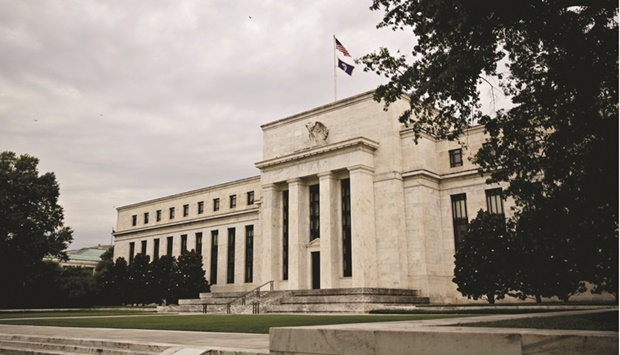The Federal Reserve’s campaign to hike rates is turning out to be enemy No 1 for the US dollar, upending Wall Street consensus heading into this year.
While conventional logic suggests rising yields should buoy the greenback, traders are now betting the Fed’s policy tightening will crimp economic growth down the road. Demand for dollar call-options has plummeted to the lowest in nine months with the currency erasing its year-to-date gains. That’s the putting dollar bulls at Morgan Stanley, Bank of America Corp and Citigroup Inc on the defensive.
“The flatness of the yield curve suggests that the market is thinking, ‘well, because of these interest-rate hikes now, growth will be slowing again in the not-too-distant future,’” said Jane Foley, head of foreign exchange strategy at Rabobank in London. “That’s going to be an influence on the dollar in the latter part of this year.”
Moves in the dollar are typically interlaced with the economy. The popular “dollar smile” theory suggests its strength will follow US outperformance or when haven demand arises. The currency added muscle during January’s equity meltdown, but it has since erased those gains, failing to capitalise on accelerating expectations for Fed rate hikes, typically a catalyst for foreign buyers in search of higher yields.
Other signs point to a waning appetite for greenbacks. The ratio between one-month put and call options for the dollar against its largest peers, while still in favour of calls, has slipped to the lowest level since May, a sign investors aren’t as willing to pay a premium to bet on further gains in the currency.
While speculative positioning in the dollar still sits near its most bullish since 2019, leveraged funds have started to take some bets off the table, CFTC data show. With money markets pricing in a rate increase in March, Fed liftoff is effectively a forgone conclusion.
And some investors surmise that the hikes have already been priced in, leaving the trade over-extended.
During the equity market selloff in the second half of January, the Bloomberg Dollar Index climbed 2%, but has since given up its year-to-date gains as haven demand ebbed. With the dollar primarily rising in periods of market upheaval and not on rate-policy expectations, that could signal that foreign-exchange investors are less focused on improved carry trades and more worried about what the Fed’s hawkish stance could mean for the economy.
In January, the spread between 2- and 10-year Treasury yields compressed to the narrowest since October 2020. While some of that move, especially for rising shorter-maturity yields, can be attributed to the forthcoming change in interest rates, a flattening yield curve may be a warning that US economic growth won’t be as robust as many had expected - what’s known to Treasury watchers as a ‘bear-flattener.’
“The market wasn’t prepared for the balance sheet discussion,” said Clifton Hill, a portfolio manager at Acadian Asset Management. “They had to readjust, and with a lot of the bullishness priced into the dollar, the market started to focus on what that potentially could do to growth.”
There are signs that a slowdown in the US economy, while not imminently likely, is at least a possibility. Consumer sentiment fell to its lowest in more than a decade in January, as inflation and the omicron variant dimmed the economic outlook.
Stephen Jen, chief executive at Eurizon Slj Capital, doesn’t buy that argument though. He sees negative real interest rates and solid corporate earnings boosting confidence in US growth, and giving the dollar reason to rally.
“You can easily work out what I propose for the right side for the smile scenario once we’re beyond the hump in this inflation profile,” Jen said.
While there has yet to be a pronounced downtrend for the greenback, higher yields haven’t provided much support, said Steven Englander, head of foreign exchange research at Standard Chartered Plc.
“Equity and growth outlook is a factor which is why the curve still keeps flattening,” he said “Investors aren’t keen on putting big bets against the dollar when there is Fed risk, but are hardly rushing to buy it even when yields bounce.”

The Federal Reserve building in Washington, DC. The Federal Reserve’s campaign to hike rates is turning out to be enemy No 1 for the US dollar, upending Wall Street consensus heading into this year.


